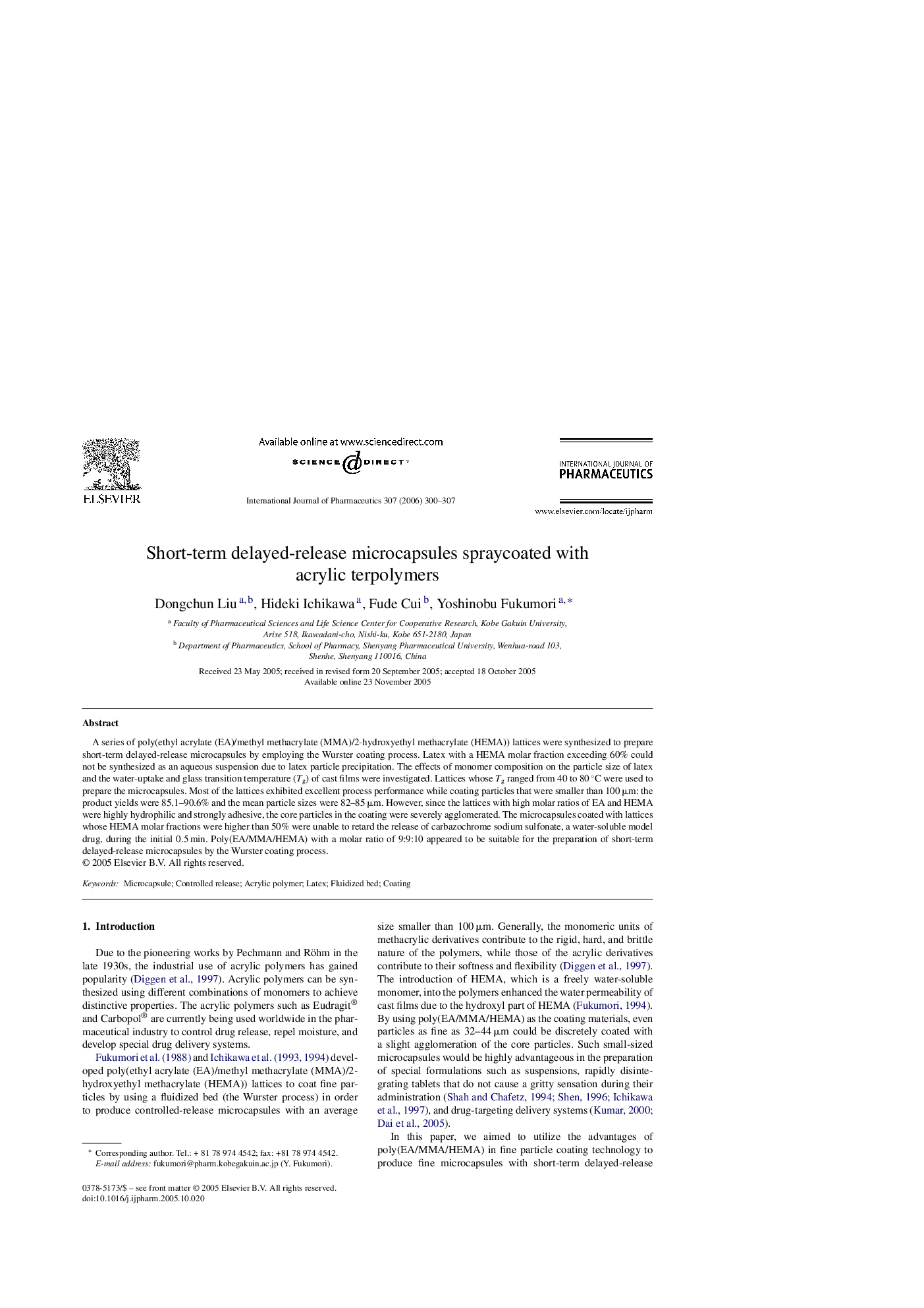| Article ID | Journal | Published Year | Pages | File Type |
|---|---|---|---|---|
| 2507109 | International Journal of Pharmaceutics | 2006 | 8 Pages |
A series of poly(ethyl acrylate (EA)/methyl methacrylate (MMA)/2-hydroxyethyl methacrylate (HEMA)) lattices were synthesized to prepare short-term delayed-release microcapsules by employing the Wurster coating process. Latex with a HEMA molar fraction exceeding 60% could not be synthesized as an aqueous suspension due to latex particle precipitation. The effects of monomer composition on the particle size of latex and the water-uptake and glass transition temperature (Tg) of cast films were investigated. Lattices whose Tg ranged from 40 to 80 °C were used to prepare the microcapsules. Most of the lattices exhibited excellent process performance while coating particles that were smaller than 100 μm: the product yields were 85.1–90.6% and the mean particle sizes were 82–85 μm. However, since the lattices with high molar ratios of EA and HEMA were highly hydrophilic and strongly adhesive, the core particles in the coating were severely agglomerated. The microcapsules coated with lattices whose HEMA molar fractions were higher than 50% were unable to retard the release of carbazochrome sodium sulfonate, a water-soluble model drug, during the initial 0.5 min. Poly(EA/MMA/HEMA) with a molar ratio of 9:9:10 appeared to be suitable for the preparation of short-term delayed-release microcapsules by the Wurster coating process.
